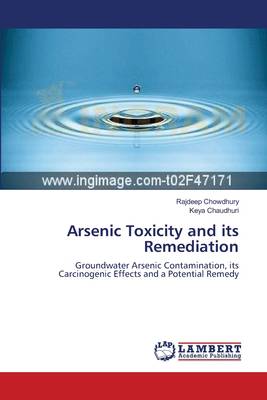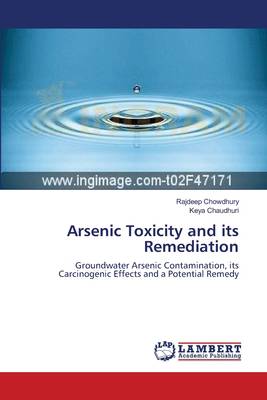
- Afhalen na 1 uur in een winkel met voorraad
- Gratis thuislevering in België vanaf € 30
- Ruim aanbod met 7 miljoen producten
- Afhalen na 1 uur in een winkel met voorraad
- Gratis thuislevering in België vanaf € 30
- Ruim aanbod met 7 miljoen producten
Zoeken
Arsenic Toxicity and its Remediation
Groundwater Arsenic Contamination, its Carcinogenic Effects and a Potential Remedy
Rajdeep Chowdhury, Keya Chaudhuri
Paperback | Engels
€ 58,45
+ 116 punten
Omschrijving
Chronic arsenic exposure is a major environmental health concern currently affecting millions of people worldwide. Given the consequences of arsenic on human health, this study explores the effects of arsenic exposure in human population currently exposed to alarmingly high levels of arsenic. Genome-wide gene expression pattern analysis provides strong evidences for arsenic to be carcinogenic and to contribute to a well-defined spectrum of diseases. We also identify a potential bio-marker to arsenic induced carcinogenesis. This study thus provides critical insights into modus operandi of the environmental toxin arsenic. Also despite arsenic being a prominent health hazard, an effective preventive measure for treating arsenic induced toxicity eludes us. We document GARLIC to be an effective antidote to arsenic. The restorative property of garlic was attributed to its antioxidant activity, chelating efficacy, and/or oxidizing capability of trivalent arsenic to its less toxic pentavalent form. We therefore identify garlic as a potential protective regimen to arsenic induced-toxicity. We have also discussed the paradoxical therapeutic potential of arsenic in this book.
Specificaties
Betrokkenen
- Auteur(s):
- Uitgeverij:
Inhoud
- Aantal bladzijden:
- 144
- Taal:
- Engels
Eigenschappen
- Productcode (EAN):
- 9783659216213
- Verschijningsdatum:
- 24/08/2012
- Uitvoering:
- Paperback
- Formaat:
- Trade paperback (VS)
- Afmetingen:
- 152 mm x 229 mm
- Gewicht:
- 222 g

Alleen bij Standaard Boekhandel
+ 116 punten op je klantenkaart van Standaard Boekhandel
Beoordelingen
We publiceren alleen reviews die voldoen aan de voorwaarden voor reviews. Bekijk onze voorwaarden voor reviews.











